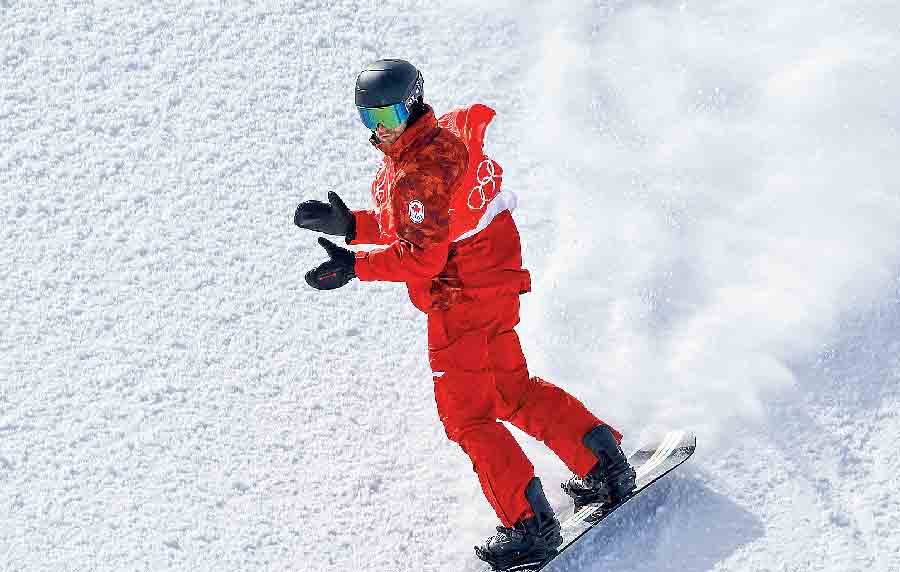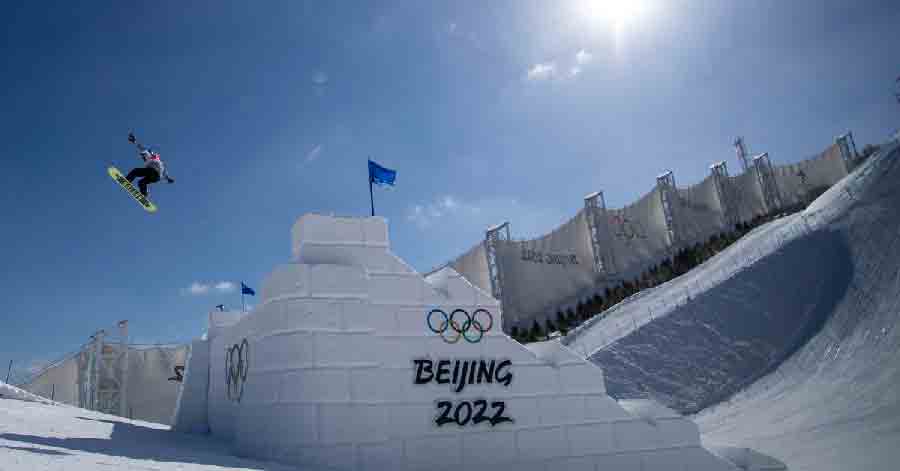China did not move mountains to host the 2022 Winter Olympics. But it flooded a dried riverbed, diverted water from a key reservoir that supplies Beijing and resettled hundreds of farmers and their families, all to feed one of the most extensive snow-making operations in the history of the Games.
This is what happens when the International Olympic Committee (IOC) decides to bring the Winter Games to a place almost completely lacking in one of the main ingredients for winter sports: snow. What’s more, Beijing and its nearby mountains did not have that much water to make the artificial kind, either.
Machine-made snow has played a major role in winter sports for decades, even in snowier places like Norway, Switzerland and Colorado. In Beijing’s version of the Winter Games, the competitions for the first time are taking place almost entirely on artificial snow, necessitating an Olympic snow-making and water-management operation of enormous scale, and foreshadowing the reality of snow sports everywhere as the planet warms.
On the mountains where the Alpine competitions take place, which do not have any recreational skiing, narrow strips of white, visible from miles away, now cut through the brown mountains.
Beijing officials insist that snow production for the Games will not strain local water supplies, which have struggled to keep pace with the city’s demands. But China’s herculean investments in snow making are part of larger efforts to turn the arid mountains near Beijing into a permanent ski and snowboard hub, a project that could face challenges as climate change upends patterns of rainfall and drought.
Worldwide, the environmentally unfriendly secret of skiing and snowboarding competitions is that, as natural snow becomes less reliable, they almost always take place on the artificial kind.
“You could not have winter sports now without man-made snow,” said Michael Mayr, the Asia manager of TechnoAlpin, the Italian company in charge of snow-making for the Beijing Games and at six previous Winter Olympics.
What sets Beijing apart from many of those past venues are its tight supplies of water, whether for snow making or for anything else. Over the past few decades, rapid development has sapped Beijing’s groundwater. July and August often bring heavy rains, but the city and nearby mountains get only sprinkles of precipitation in the winter.
In 2017, the last year for which international figures are available, Beijing had only about as much freshwater resources per resident — 36,000 gallons — as the western African nation of Niger, at the edge of the Sahara. Zhangjiakou, the city 100 miles northwest of the capital that will host some skiing and snowboarding events, had 83,000 gallons per resident, comparable to Djibouti in the Horn of Africa.
Countries with less than 260,000 gallons of freshwater resources per person are considered water-scarce. Florian Hajzeri, who has been in China for four years overseeing the snow-making project for TechnoAlpin, said he realised the magnitude of his task as soon as he saw the landscape of the Olympic competition areas.
“There are trees and vegetation, but it is not like an Alpine forest: It is vegetation for a drier climate,” he said. “It snows, but it is not enough for the competitions.”
Before TechnoAlpin could install pumps and build more than 40 miles of pipe, at a cost of nearly $60 million, Chinese officials first had to figure out how to deliver enough water to the mountains.

Max Parrot of Canada during the men’s snowboard slopestyle final on Day III of the Beijing Winter Games at Genting Snow Park in Zhangjiakou on Monday.
How much water? Roughly one million cubic meters, according to TechnoAlpin, enough to fill 400 Olympic-size swimming pools. And that is just to start the Games.
To gather it all, Chinese authorities have built pumping stations to carry water from reservoirs miles away.
Officials in Zhangjiakou have turned off irrigation across tens of thousands of acres to conserve groundwater, and resettled farmers who were living in what is now the Olympic competition area in high-rise apartments.
While the Chinese government has made progress on water issues in recent years, environmentalists say the capital cannot afford to rest on its laurels.Chinese officials say they are limiting the impact of snow-making, particularly because the snow that is made will be collected after it melts so it can be reused.
But scientists who study snow-making have found that a portion of the water evaporates after it is blasted out of a cannon but before it can crystallise into a flake. Some of the flakes are blown away by wind. Some droplets do not fully freeze and end up draining into the ground.
Other research has found that artificial ski runs can erode the soil and degrade vegetation, regardless of the kind of snow they use.
Under certain conditions, though, such as the very cold temperatures expected in China, Alpine skiers sometimes prefer artificial snow, because technicians can produce wet flakes that freeze into the kind of smooth, rock-hard surface they prefer.
“It is more dense,” said Travis Ganong, an American who specializes in speed events. “It doesn’t really form flakes, and when it is groomed it gets more packed. It just sits really well, and it becomes very uniform. It’s actually how we like it.”
(New York Times News Service)











